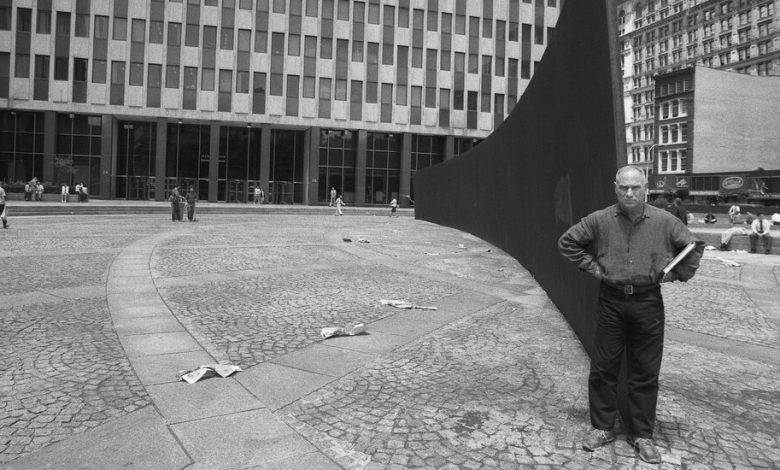For Richard Serra, Art Was Not Something. It Was Everything.

When Richard Serra died yesterday, I flashed back nearly 30 years to a morning at the Metropolitan Museum of Art, looking with him and with his wife, the German-born art historian Clara Weyergraf, at Jackson Pollock’s splash and drip painting from 1950, “Autumn Rhythm.”
We had decided to meet as soon as the museum opened, when the gallery, at the far end of the Met, would still be empty. Taking in the painting, Serra had the air of a caged lion, pacing back and forth, moving away, to see it whole, then back in to inspect some detail.
“We evaluate artists by how much they are able to rid themselves of convention, to change history,” he said. Which was Serra’s bottom line — in his case, nudging sculpture into new territory. Why else be an artist? This was how he thought. Old-school. Old Testament. For him, art was all or nothing.
Of course he wasn’t alone in his thinking among American artists of his generation, the offspring of postwar American power and arrogance, of titans like Pollock.
That said, not many artists accomplished what he set out to do, in the process seeing public perception of his work flip 180 degrees.
All these decades later, a wide swath of the public today continues to be baffled and occasionally galled by Pollock, just as it didn’t get Serra for years. “Tilted Arc,” the giant steel sculpture by Serra, was still a fresh wound when we visited the Met. Public officials had removed it from a plaza outside the courthouses in Lower Manhattan in 1989. Fellow artists objected to the removal, but office workers who ate their lunches in the plaza implored City Hall. They saw it as an intrusion, an ugly wall, dividing their precious open space. Serra still wore his fury like a badge of honor.
